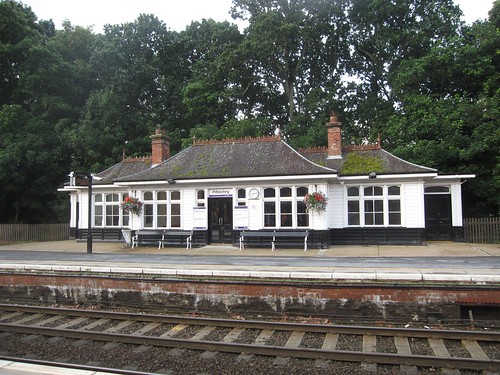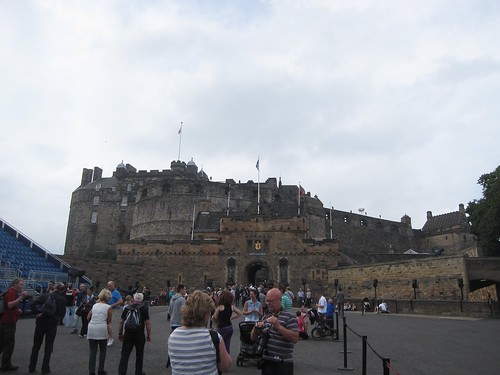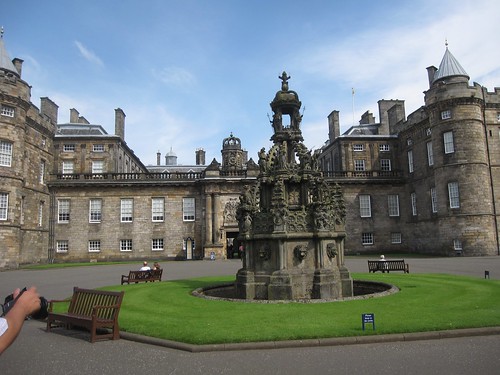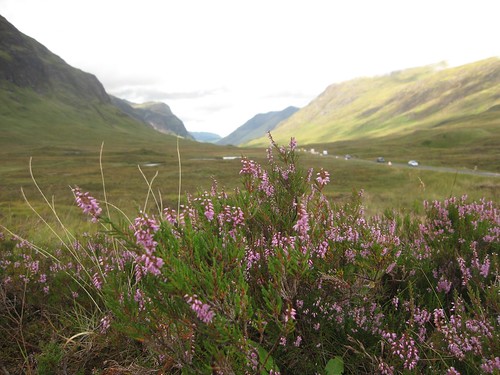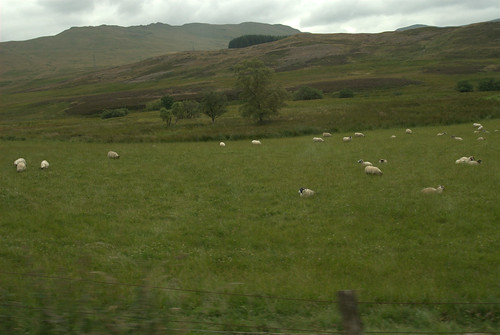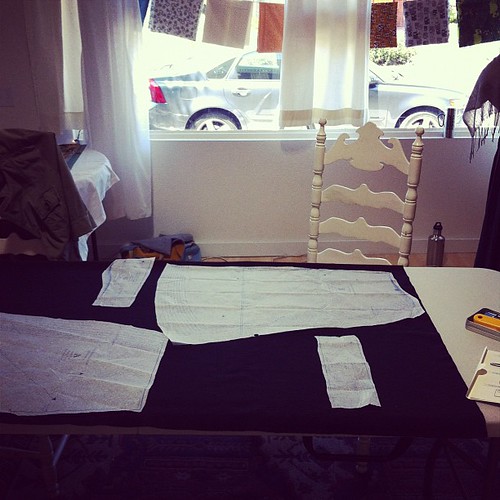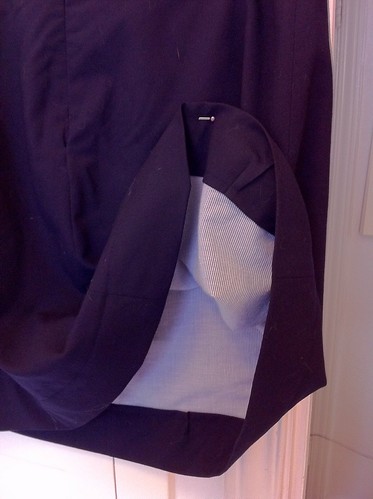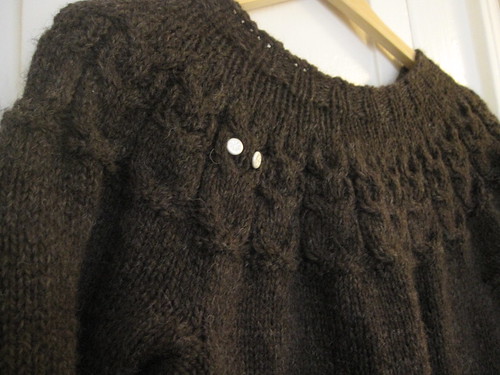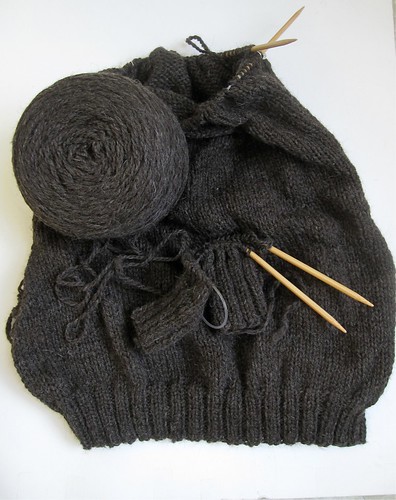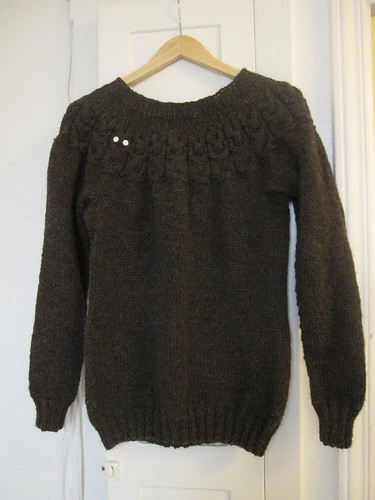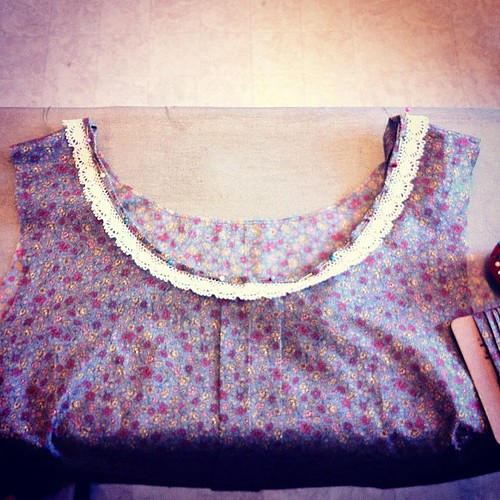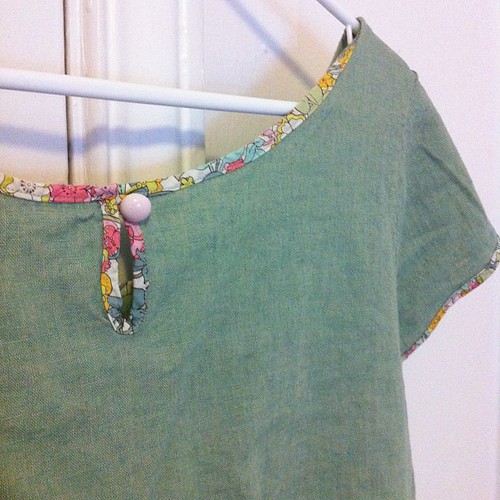Cities will suck the life right out of you, but in a good
way. This is something I’ve learned is
true all over the world. London, Los
Angeles, Munich, San Francisco, Genoa, Berlin, and Lyon have all left me
feeling bone-tired and in need of a pint of something after spending a full day
seeing their sights, and now I can add Glasgow and Edinburgh to that list. The first time you see a new city requires a
staggering amount of mental energy. They
demand that you take in everything they have to offer: their food (fast and
cheap or slow and expensive but almost always good), their buildings (new, old,
filled with stories and memories), and their people (folks that really aren’t
that different from yourself, although they might speak a different language
and have different pictures on their money).
We saw Glasgow on our first full day in Scotland, which
meant that we were still navigating the logistics of driving and caravanning
with a large group. We started at the
Glasgow Cathedral, which easily rivals anything I saw on the continent in
2008. Being a huge Harry Potter fan, I
was delighted to learn that this church is also known as St. Mungo’s
Cathedral.
 |
| Glasgow Cathedral (or St. Mungo's) |
I loved the sacristy especially, which had several Bible
verses spelled out in letter tiles on the floor. The verses were all centered on the theme of
walking and paths. Around the central
pillar it reads “Guide our feet into the way of peace”, and around the edge of
the room there are four verses: “He that walketh upright walketh surely”, “Let
us run with patience the race that is set before us”, “Hold up my goings in thy
paths that I may slip not”, and “”. It seemed to me like the perfect place for
pacing contemplation. A few circuits
around the room would be enough to stretch your legs, meditate on the words
embedded in the floor, and take you past the fireplace once each turn.
After lunch in the nearby café, the group split up to see
things they each found interesting.
Being huge fans of the Arts & Crafts movement, we went on a trek
through the main shopping drag to see the Willow Tea Rooms and the Glasgow
School of Art, both designed by Charles Rennie Makintosh. Sadly we arrived too late to get on one of
the tours of the school of art, but we able to peer around some of the
buildings.
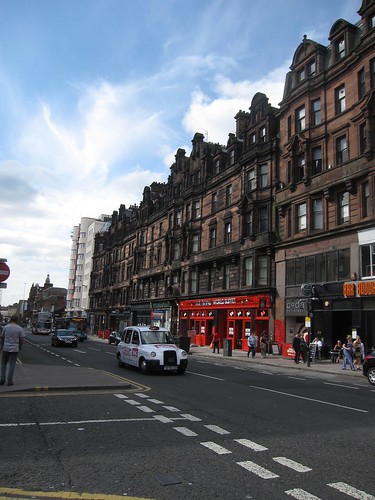 |
| Walking through Glasgow |
Even though we didn’t go into many places in Glasgow, we did
get to walk around a fair bit and see quite a lot of the city. At one point we inadvertently walked through
a small college in the middle of the city (University of Strathclyde), and
unmistakably heard a student playing bagpipes in their dorm room. Glasgow definitely felt industrial compared
to Edinburgh. If we hadn’t all been
nervous about driving home in the dark, I think we would have stayed for dinner
and a beer, but as it was we were still tired and turned for home before
dark.
If on our first day I took a few dainty sips of Glasgow,
then I certainly tried to swallow Edinburgh whole on our second-to-last
day. August is the festival season for
Edinburgh, and the city is notoriously packed, so we decided to take the train
into the city early in the morning. That
would drop us off in the middle of everything around 10AM, and the last train
back to Pitlochry (our starting point) left around 7:30, which we figured was
enough time to hit the highlights. An
additional day in the city would have been nice, but I’d be saying that even if
we’d spent a month in Scotland.
After so much driving during the rest of the week, taking
the train was a stroke of genius. We had
a short drive into Pitlochry around 7:30 AM, picked up our tickets from the
counter, and spent out train ride discussing what we wanted to see. Only half of our group wanted to see
Edinburgh, so we had a row of seats to ourselves. I worked on my knitting, and in another
Potteresque moment, the husbeast bought coffee from the snack trolley. We arrived feeling refreshed, and knowing
that everyone could have a beer with dinner since nobody had to drive
home.
It took some time for us to get oriented to the city, but we
eventually found our way to St. Giles’ Cathedral, our first stop.
 |
| St. Giles's Cathedral, plus festival tents |
I have to mention the place we had lunch: The Outsider, on
George IV Bridge Street. The food and
beverages were just delightful: I had coley (a white fish) with mushroom
risotto and peas, and the husbeast had a tasty-sounding pork chop. It was a really delightful
place to eat in the middle of the bustle of the city. Fortified with such excellent food, we got
back on the Royal Mile and walked up to Edinburgh Castle. Unfortunately, we hadn’t really timed it well
in terms of the crowds. We opted to take
in the lovely views of the castle’s exterior rather than standing in the line
to go inside.
The rest of the group was very kind in humoring me in
walking back along the Royal Mile and taking a slight detour:
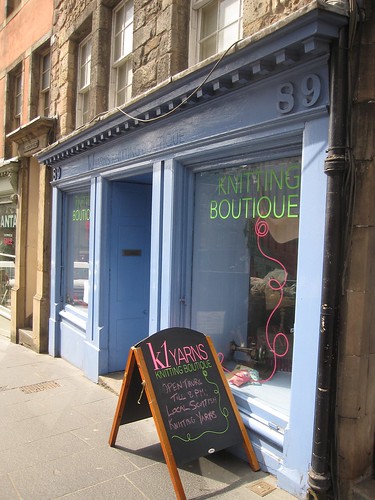 |
| An LYS! In the wild! |
I may have bought a little bit of yarn, but more details on
that later. I was very pleased at the
selection of Scottish yarns they had available, and the person working when we
went in was very helpful in helping one of our party choose yarn to take back for
his girlfriend. The husbeast acquired
some cheese while we were yarn shopping.
Our next stop was at the other end of the Royal Mile: Holyrood House
Palace, and the Queen’s Gallery.
Holyrood was very interesting, and the audioguide included
in the ticket price was incredibly detailed.
I particularly enjoyed seeing the rooms inhabited by Mary, Queen of
Scots and her portrait. The ruins of
Holyrood Abbey, open to the sky, are a wonderful end cap to the tour of the
palace grounds. I also opted to pay for
entrance to the Queen’s Gallery, which had some very fine paintings.
 |
| Holyrood Abbey Ruins |
At this point, I looked at the time and realized that I was
not going to be able to see one of the items on my list: The National
Gallery. It would close in 20 minutes,
and was back at the Castle end of the Royal Mile. We decided to walk back at a more leisurely
pace, and did a bit of souvenir shopping along the way. Since we were all feeling a bit footsore, we
opted to make our last activity dinner near the train station. By the time we finished with dinner, it had
started to rain quite heavily. This made
the final walk to the train station a bit harrowing, as we were nervous about
getting there in enough time to find our platform (sadly, 19 rather than 9
¾). Plus, I was wearing less than ideal
footwear, and kept slipping in puddles.
I was also the only one with an umbrella, so we were all quite soggy
when we collapsed into our seats on the train.
Between the rain, my shoes, and the entire day of walking, I
was quite exhausted and a bit cranky when we got on the train, but it was
nothing that a peaceful ride and a hot cup of tea from the trolley couldn’t
fix.
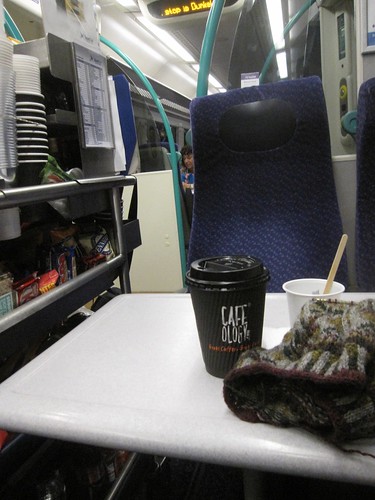 |
| My super-sneaky side shot of the trolley, plus tea & knitting. |
